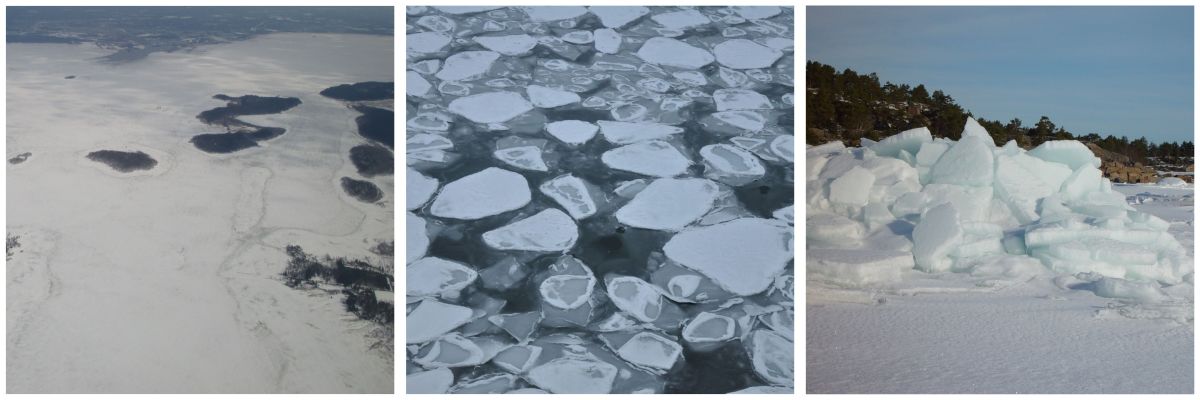Ice movements
The ice in the Baltic Sea exists as fast ice and drift ice. Fast ice is situated in coastal and archipelago areas, where the depth is usually less than 20 metres. It develops during early ice season, and remains stationary to the melting period. Instead drift ice moves and in some cases gets packed.
Drift ice
The ice that moves is called drift ice. It covers 1-100 % of the sea surface. The movements are caused by the wind and the sea currents. In the Baltic Sea there are no permanent strong currents, which is why the movements of ice are mainly due to the prevalent winds which cause the ice to drift. The movement of ice is determined by the direction and the magnitude of the wind, the friction between the ice and the sea water, the friction inside the ice field and the Coriolis-force which is caused by the Earth’s rotation.
When the wind speed exceeds 5 meters per second, it is the determining factor of the drifting of the ice. In this case the speed of the ice is 1–3 % of the wind speed. For example, when the wind speed is 10 m/s the speed of the ice is 0,2–0,6 knots. The speed of the ice is lower when the ice field is more dense.
Leads
When drift ice moves away from the fast ice or consolidated ice it creates a lead in the ice field. During strong winds the width of the lead can reach 10–30 km in 24 hours. If the wind direction remains constant in a vast area the lead can become very long. During spring in the northern parts of the Bay of Bothnia there can be formed a lead that is shaped like a crescent. It reaches from Luleå from the Swedish coast to Kemi lighthouse and Merikallat to Raahe and even Kokkola.
Pack ice
Drift ice can easily become packed when it reaches an obstacle. Typically, this occurs when the ice field moves against the fast ice edge. In the shallows, ridges get anchored to the bottom and the visible parts can grow to tens of meters high. Ridged ice appears also in the middle of seas where the ice floes get pressed against each other and break into pieces. The pieces of ice pile up over and under the sea surface forming meandering ice ridges.
Ridge ice floats in the open sea according to the Archimedes principle: the part that is under water is about nine times the mass that is above the sea level. The height of the underwater parts of the ridge are about six times the height of the banks that are above the sea level. The visible part of the floating ice ridge is typically 0,5–1,5 meters high.
Normally, most of the ice ridges appear at the edges of sea areas, wherever the wind is directed. At the Baltic Sea the prevalent winds are between south and west winds thus most of the ridges appear on the Finnish coast and on the eastern parts of the Gulf of Finland. Correspondingly, most of the leads appear on the Swedish and Estonian coasts.
The movement of large sea ice areas is impressive and possibly a dangerous phenomenon. Sea ice field that is pressured can injure built structures in the sea, like lighthouses or ships that are badly stuck in the ice. The ridges and brash ice barriers are the most significant obstructions to navigation in the Baltic Sea. Powerful, ice-strengthened vessels can break through ice up to almost one metre thick, but they are not capable of navigate through ridges without icebreaker assistance. Ice dynamics affects navigation considerably. High pressure in the ice fields can be dangerous to the vessels, and it may at least cause time delays from hours up to days.

15.3.2021
